Shiney Sebastian (Optometrist and Educator. Ex Senior Faculty, Lotus College of Optometry, Mumbai)
What is low vision?
Low vision is a type of vision loss that cannot be corrected with regular prescription eyeglasses or contact lenses, or other medical or surgical treatments. Low vision does not include complete blindness because there is some residual vision in persons with low vision.
Persons with low vision are categorised into two groups:

- Partially sighted (meaning they have a vision between 20/70 and 20/200 with the aid of corrective lenses)
- Legally blind (meaning vision is no better than 20/200 with regular correction aids).
What are the causes of low vision?
Even though eye diseases are more common in persons over 50 years of age, normal ageing of the eye does not lead to low vision. Low vision in a child can be caused by a few of the same conditions as adults and other causes.
Some of the common causes are:

- Macular degeneration
- Cataract
- Glaucoma
- Diabetic retinopathy
- Retinitis pigmentosa
- Eye injuries
- Traumatic Brain Injury
- Retinopathy of Prematurity
- Retinal Detachment
What are the symptoms of low vision?
- Loss of central vision makes it difficult to recognise faces or read.
- Loss of peripheral (side) vision impacts mobility due to “tunnel vision”. It can also reduce reading speed, as the person is able to see only a few words at a time.
- Blurred distance and near vision even with the best possible eyeglasses.
- Reduced contrast sensitivity leading to a feeling of generalised haze.
- There is increased light sensitivity and glare.
- They have night blindness leading to difficulty in dimly lit or dark environments.
What is a low vision examination?
The examination begins with the Low Vision Specialist (an Optometrist or Ophthalmologist) asking questions about the family’s personal medical history and general health. In the case of children, there will also be questions about the child’s birth history. The specialist will also want to know about the person’s visual problems and how it affects his reading, work, travel, and other daily life activities and entertainment.
The low vision specialist will then do a detailed low vision examination using various instruments, lights, magnifiers, and special charts to test your visual acuity, depth perception, and visual fields.
Following the evaluation, the specialist will create a complete, individual rehabilitation plan based on the patient’s visual abilities and aspirations.

What are the solutions available for low vision problems?
Losing vision does not mean giving up activities you love, but it may mean learning new ways to do them. Some of these are –
Improve lighting by using a gooseneck lamp aimed at the task or by replacing light bulbs with higher lumen bulbs and using flashlights.
Reduce glare by adjusting lighting, covering shiny surfaces indoors. When outdoors, wearing a wide-brimmed hat, cap, visor, or wrap-around sunglasses helps.
Increase contrast using a contrasting background like a white plate for dark coloured food or bold felt tip markers when you write lists or take notes.
Optical Low Vision Aids:


Children with low vision may benefit from corrective eyeglasses or contact lenses earlier than the rest. Other aids are magnifying spectacles, stand magnifiers, magnifying glass, telescopes etc.
Non-Optical Devices:
Watches and devices with audible announcements to measure blood pressure or blood glucose, large-print books, newspapers, magazines, playing cards, telephones with large-sized numbers and high-contrast colours, needle threaders etc.
Electronic Devices:


Audible books and electronic books like Kindle, Nook etc.
Text-reading software is available on phones and computers. These devices also let you change text size, adjust contrast, and use voice commands. There are also many apps to choose from, such as programs that read material aloud, magnify or illuminate.
Video magnifiers are available in portable and desk formats to magnify printed pages, pictures, or other small objects.
Many persons might also need vision rehabilitation to achieve the best possible use of their vision.
Can a person with low vision lead a normal life?

Persons with low vision can learn various techniques to enable them to do the daily activities with their remaining vision and lead a normal life.
Suppose a loved one or a friend has low vision. In that case, they need to learn to live independently and safely, help them recognise the adjustments they need to make to maximise their independence in a safe manner.
A Low Vision Specialist can help persons with low vision regain their independence and improve their quality of life.
Government and private programs offer educational and vocational counselling, rehabilitation training and various allowances to persons with low vision.
Can low vision be prevented?
Timely treatment of patients having diabetes, macular degeneration and glaucoma may prevent further vision loss. Low vision can be reversed if the cause is a cataract. If the nutritional deficiency, like Vitamin A deficiency, is the cause, the person needs to be treated with supplements.
Acknowledgements for the pictures:
- https://www.kcretina.com/blog/2017/02/14/age-related-macular-degeneration-the-symptoms-179533
- Low Vision Screening & Treatment, Wake Forest – McPherson Family Eye Care
- Low-Vision Exams | Optometrist in Mansfield, PA | Strohecker Vision Care
- Low Vision Devices for Macular Degeneration: Reviews, Cost, Comparison (sweye.com)
- Amazon Kindle Paperwhite 2018 review: the new standard | Kindle | The Guardian
- Low Vision and Glaucoma | BrightFocus Foundation
- Low Vision Aids & Prism Glasses (hovisiongroup.com)
